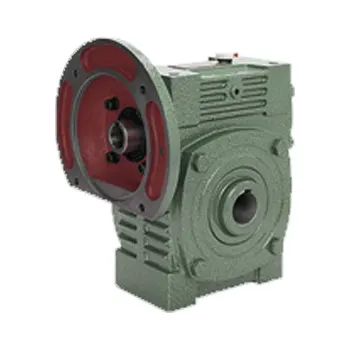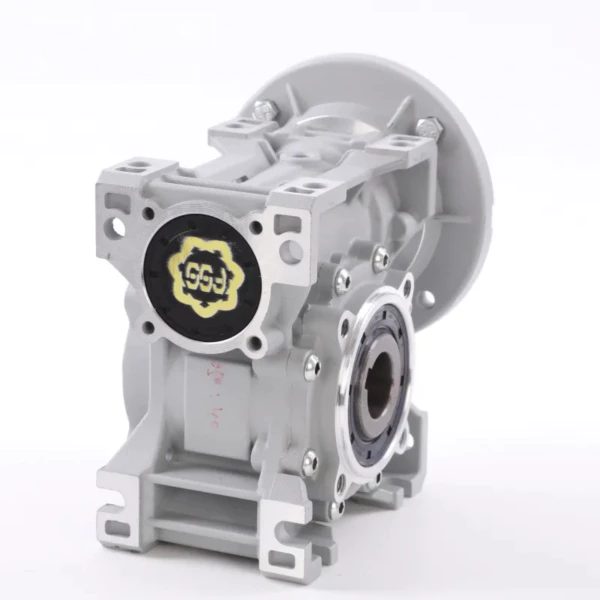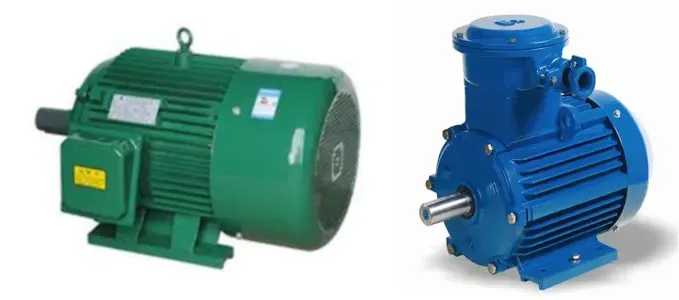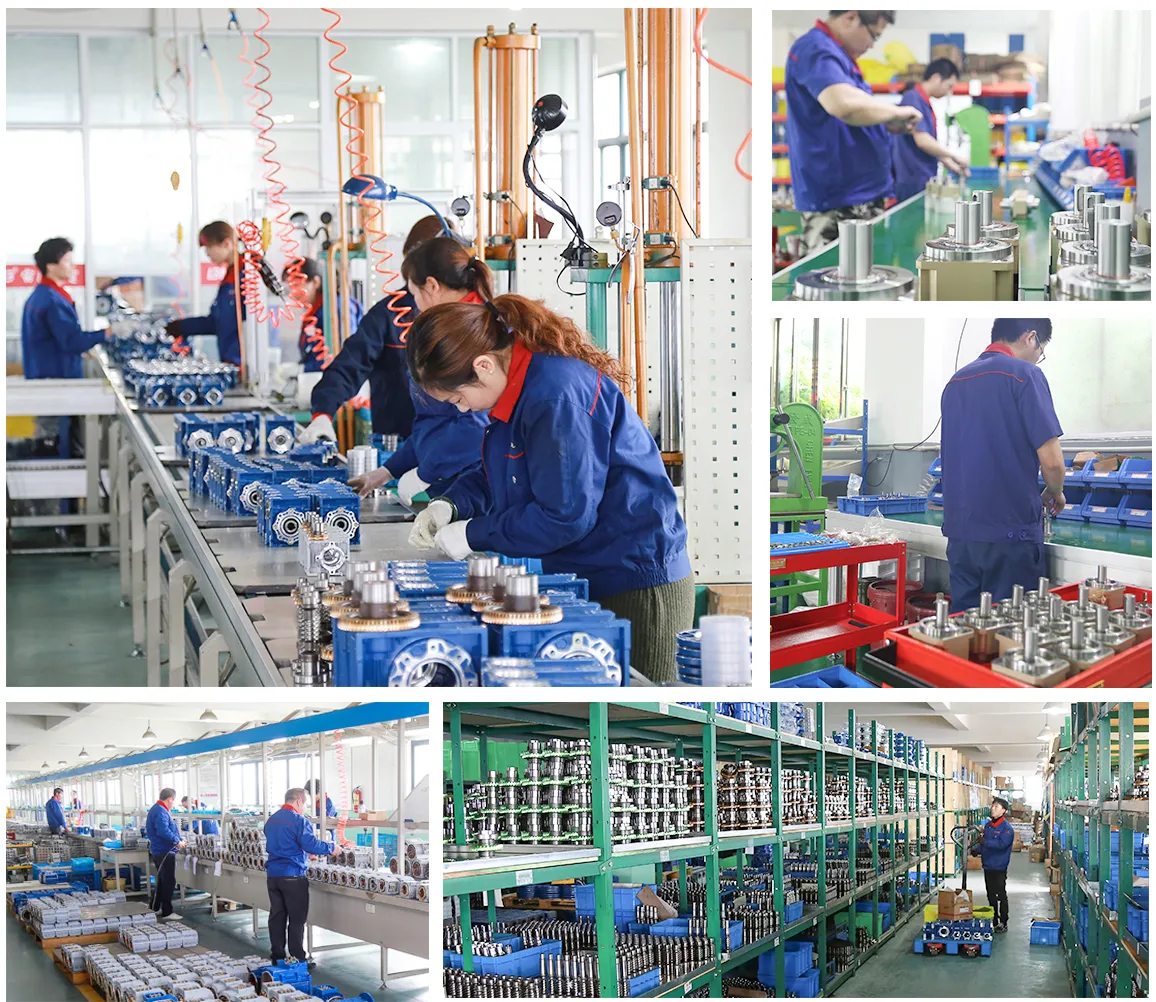A worm gearbox, also known as a worm drive reducer, is an integral part of many industrial applications, particularly in wind energy technology. This article delves into the core principles of worm gearboxes, their application in vertical axis wind turbines, and why they are the optimal choice for such applications.

Understanding the Basics of Worm Gearboxes
A worm gearbox is a type of speed reducer that uses a worm wheel and worm gear to control rotational speed. The gear set consists of a worm (helical gear) on the input shaft, and a worm wheel (similar to a spur gear) on the output shaft. The worm gearbox provides high torque output, exceptional speed control, and a compact design that fits in tight spaces.
Working Principle of Worm Gear Reducer in Wind Turbine Applications
The operation of a worm gearbox in a wind turbine application is simple yet ingenious. As the wind turns the turbine’s blades, the rotation is transferred to the input shaft of the worm gearbox. The helical worm gear then meshes with the worm wheel, causing it to rotate and produce a high-torque output. This high-torque, low-speed output is ideal for wind turbine applications, where slow, powerful rotation is required.
Basic Structure and Components of a Worm Gearbox
A worm gearbox consists of several key components, each playing a vital role in its operation. These include:
- Worm wheel: This is the output gear in the worm gearbox. It meshes with the worm gear and is responsible for producing the high torque output.
- Worm gear: This is the input gear that receives power from the turbine blades. It meshes with the worm wheel to drive rotation.
- Input and output shafts: The input shaft connects to the worm gear and receives rotational power from the wind turbine. The output shaft connects to the worm wheel and delivers the high-torque output to the generator.
Why Worm Gearboxes are Suitable for Wind Turbine Applications
There are several reasons why worm gearboxes are the ideal choice for wind turbine applications. These include:
- High torque output: Wind turbines require a gearbox that can produce high torque at relatively low speeds. Worm gearboxes are perfect for this as they can convert high-speed, low-torque input into low-speed, high-torque output.
- Reliability: Worm gearboxes are highly reliable and durable, with few moving parts and a robust design that resists wear and tear.
- Compact design: Their small footprint makes them ideal for applications where space is limited.
- Efficiency: Worm gearboxes provide high efficiency in power transmission, reducing energy loss and improving overall system performance.
- Self-locking capability: The worm gearbox has a self-locking feature which prevents the system from back-driving, an essential safety feature in wind turbine applications.
Key Features and Advantages of Worm Gear Motors
Worm gear motors, which combine a worm gearbox and an electric motor, offer several key advantages. These include:
- Wide range of ratios: This allows for precise control of output speed and torque.
- Quiet operation: The meshing of the worm gear and wheel is smooth and quiet, reducing noise pollution.
- High shock load resistance: Worm gear motors can handle sudden changes in load without failing, making them ideal for the variable wind speeds encountered in wind turbine operations.
- Long service life: Due to their robust construction and minimal wear parts, worm gear motors have a long operational life.
Choosing the Right Worm Reducer for Your Application
When selecting a worm reducer for your wind turbine application, consider the following factors:

- Torque requirements: Choose a gearbox that can handle the maximum torque your application will produce.
- Speed requirements: The gearbox should be able to reduce the input speed to the desired output speed.
- Size constraints: The gearbox must fit within the available space in your application.
- Environmental conditions: Consider factors such as temperature, humidity, and exposure to dust or chemicals.
- Efficiency: Choose a gearbox with high efficiency to minimize energy loss.
Motors for Worm Gear Reducers

Electric motors are the driving force behind worm gear reducers, providing the necessary power to turn the worm gear. The choice of motor can greatly influence the performance and efficiency of the worm gearbox. We also offer a wide range of electric motors specifically designed to work in harmony with our worm gearboxes.

About Our Company
We are a comprehensive transmission equipment manufacturer with over 15 years of experience in the industry. Our products, including the MRV series worm gear reducer, GV series gear reducer, RT series solar reducer, XV series planetary reducer, BD series harmonic reducer, and various types of non-standard reducer, are widely used in various industries. We are proud to serve customers in Europe, America, Africa, and Asia, and are committed to providing the highest quality products at competitive prices.

Frequently Asked Questions
1. What is the lifespan of a worm gearbox?
With proper maintenance, a worm gearbox can last for several decades. Factors affecting lifespan include operating conditions, load, and maintenance practices.
2. Can I customize my worm gearbox?
Yes, we offer customized solutions to meet your specific needs. Please contact us for more information.
3. What is the lead time for your worm gearboxes?
The lead time varies depending on the model and quantity. Please contact us for specific lead times.
Edited by Zqq.
